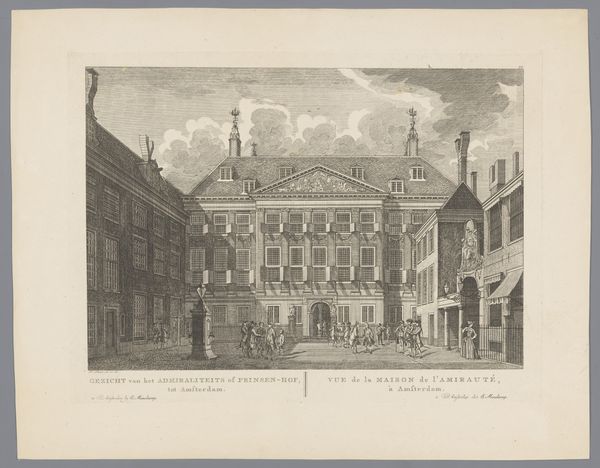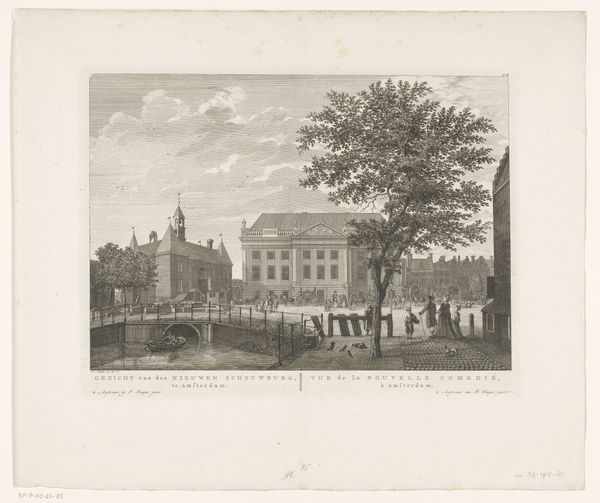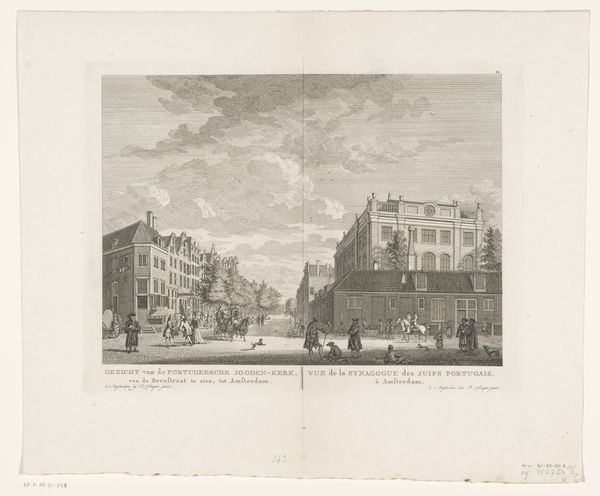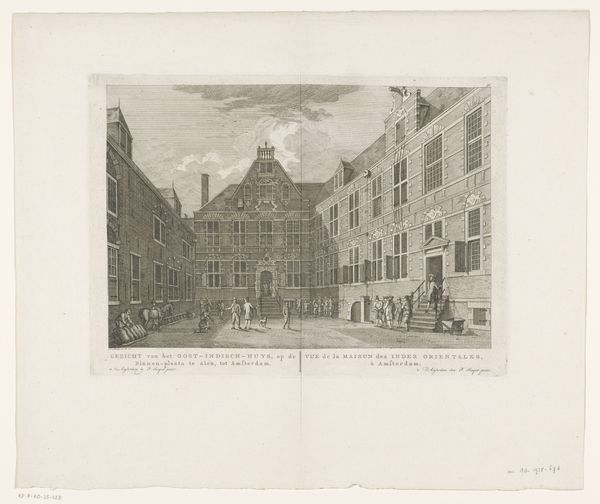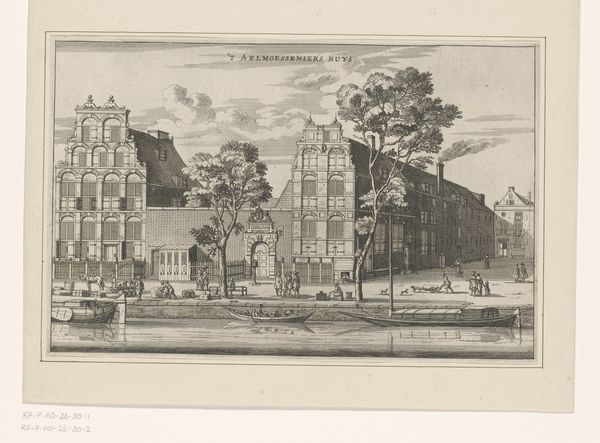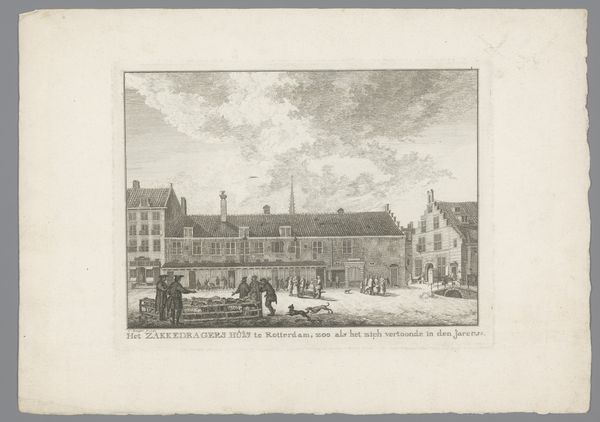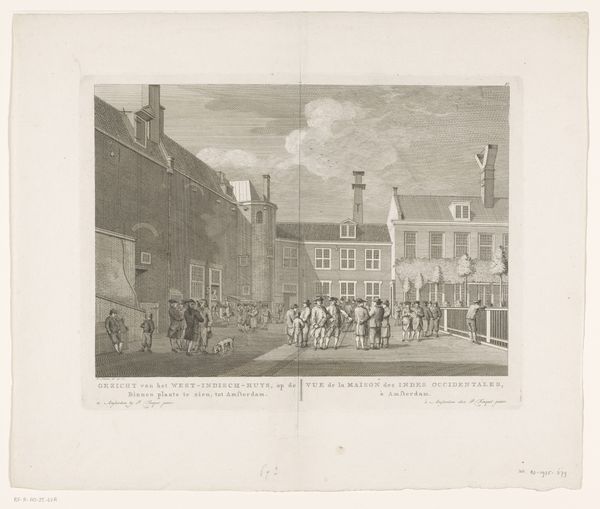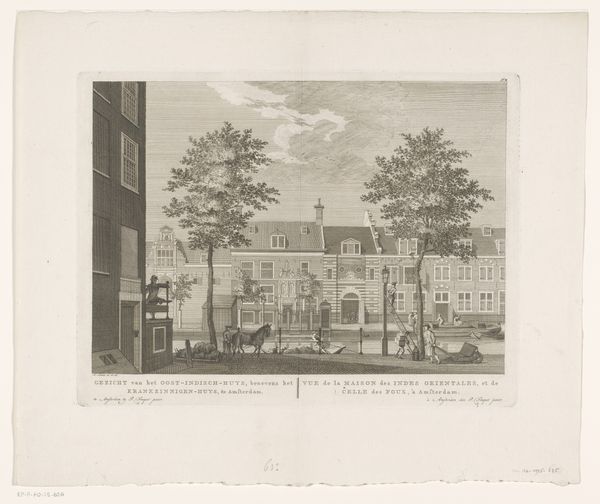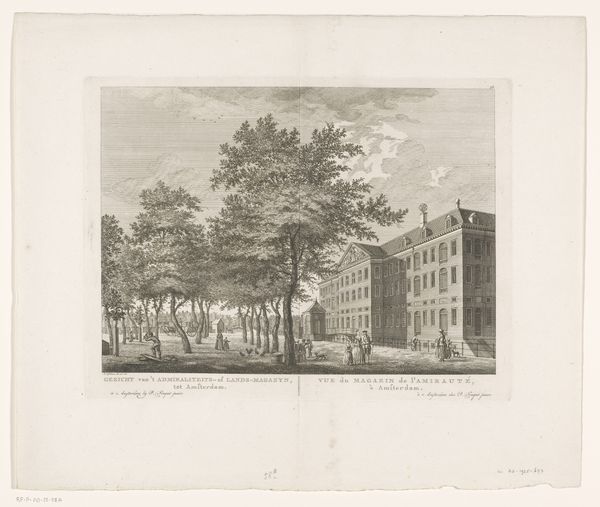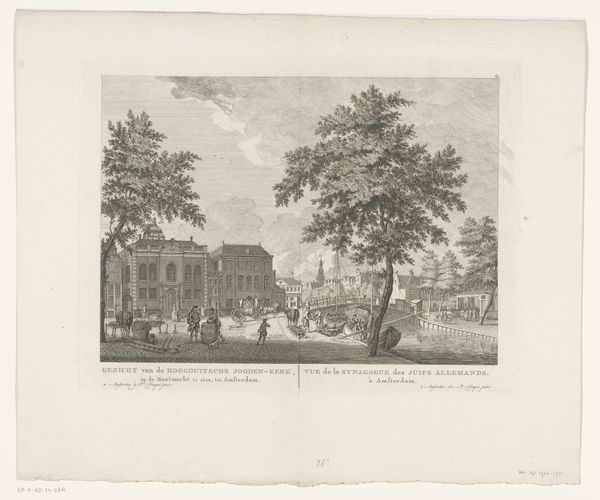
Gezicht op de vernieuwde Waag op de Dam in Amsterdam 1778 - 1783
0:00
0:00
print, engraving
#
neoclacissism
# print
#
cityscape
#
engraving
Dimensions: height 284 mm, width 382 mm
Copyright: Rijks Museum: Open Domain
Editor: This engraving from 1778-1783 by Hermanus Petrus Schouten shows the Dam Square in Amsterdam, featuring the newly renovated Weigh House. It feels very ordered and almost...clinical in its depiction of daily life. What strikes you about it? Curator: I see a snapshot of power and social hierarchy meticulously rendered. Look at how the architecture dominates the scene, imposing itself on the people below. It's not just a cityscape; it's a deliberate construction reflecting the societal values of the time, specifically Neoclassicism and its connection to power structures. How does the precise detail of the print resonate with broader political dynamics for you? Editor: Well, the figures seem almost secondary to the buildings, more like props than active participants. The lack of visible emotion or individuality reinforces that feeling. So, you're suggesting the print reflects a top-down view of society? Curator: Precisely. The architecture isn't merely a backdrop; it's an active agent dictating the terms of engagement. The Weigh House, centrally positioned, represents not just commerce but also control and regulation. And consider who had access to these spaces, and who was excluded. How do you feel the composition emphasizes privilege and perhaps marginalization? Editor: I see your point. The people depicted are clearly of a certain class. I wonder what’s omitted from this idealized view. Perhaps the artist intentionally ignores social realities to serve a specific narrative? Curator: Indeed. These images participated in constructing a narrative of order and prosperity, obscuring the experiences of those who didn’t fit that ideal. Consider it propaganda through precision. So, reflecting on this piece, what questions does it raise for you about the role of art in shaping perceptions of reality? Editor: I think it challenges me to look beyond the surface and to consider the social and political contexts that shaped not just the subject matter, but also the artist's choices in portraying it. Curator: And it prompts us to think about how those power dynamics persist, subtly shaping the world around us even today.
Comments
No comments
Be the first to comment and join the conversation on the ultimate creative platform.
